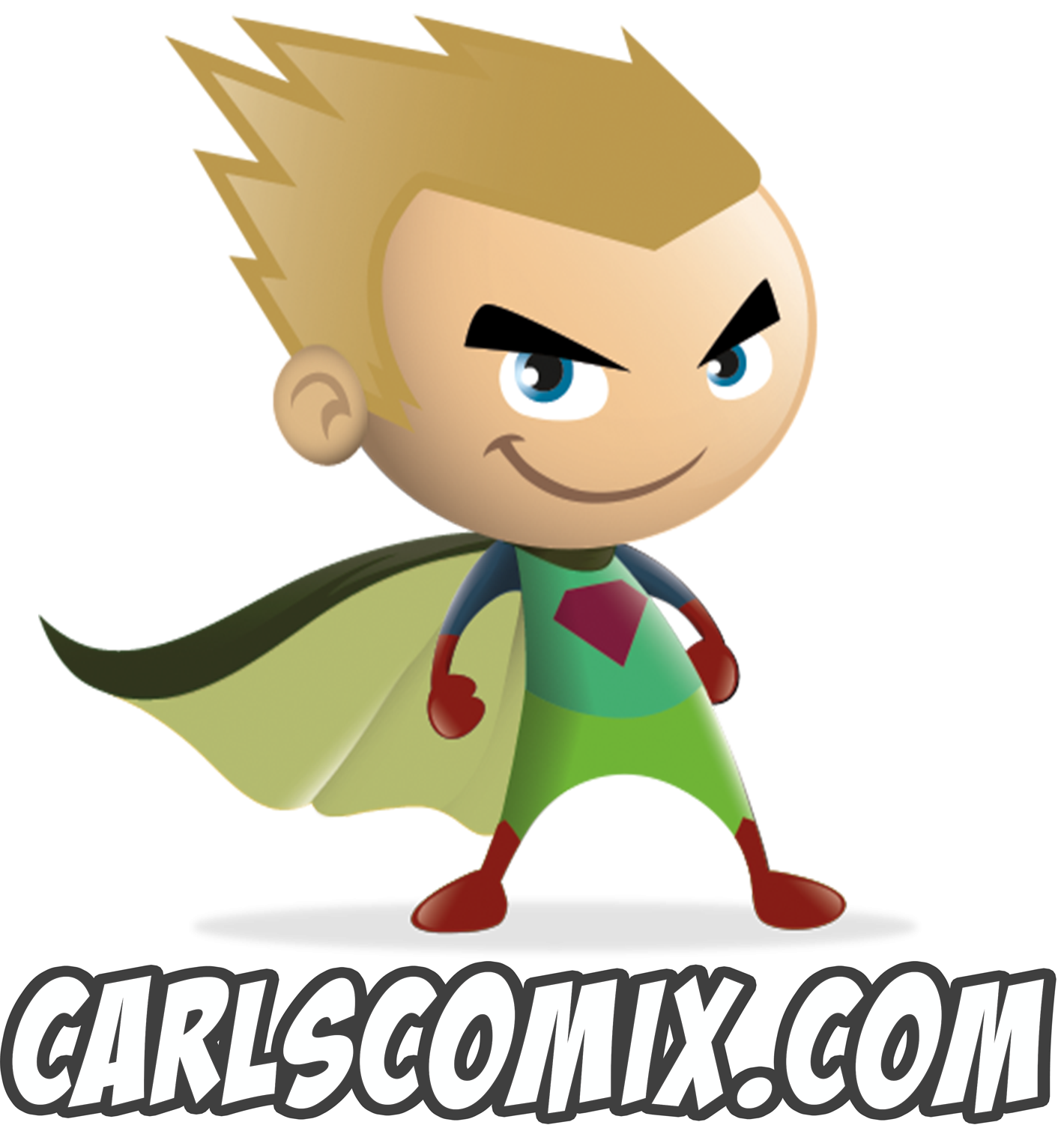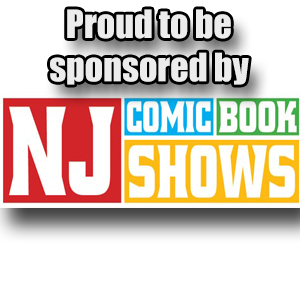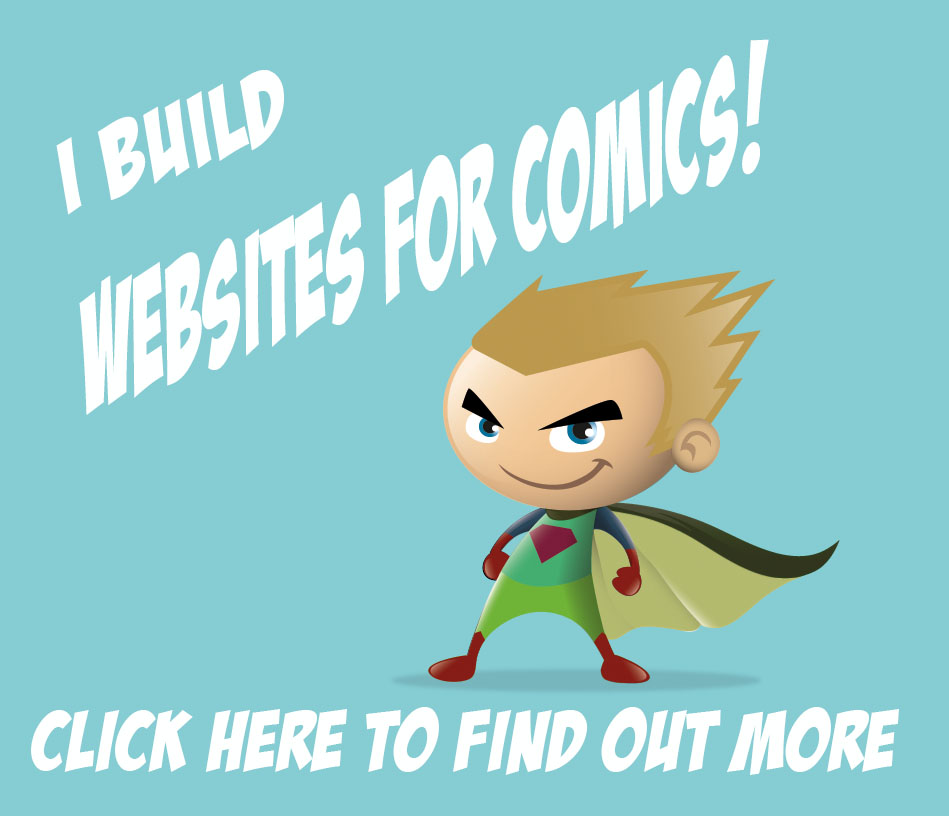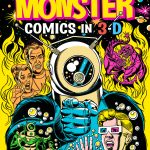I’m here at Metropolis Comics with artist J. Scott Campbell, who is most well-known for creating Danger Girl, as well as his work on Gen 13 and The Amazing Spider-Man, as well as a huge number of covers for pretty much every publisher there is. Scott, I’d like to ask you a few questions.
Scott: Of course! Go right ahead.
Carl: First, I have to ask: I noticed that the other day, you retweeted somebody who wants you to draw Sailor Moon characters. Does that mean you’re going to start doing that?
Scott: Well, my wife, that’s her favorite thing in the world. My wife, Danielle, loves Sailor Moon. So, I thought it was funny that someone had mentioned that and I was hoping she would actually see the retweet because she loves Sailor Moon. I forget which one exactly. I think it’s Saturn Moon. But, I’m on video here so I better get it right. I think that’s a thing. But, yeah, it’s certainly possible, it would probably be a fan art thing probably because I’m not sure who publishes Sailor Moon, if that’s even a comic right now. But you never know, you might see me drawing Sailor Moon in the very near future.
Carl: If she finds out she’s going to force you to do it.
Scott: She’s been trying to force me for a while; I’m kind of shocked it hasn’t worked because usually she’s pretty persuasive when it comes to what she wants. But we’ll get to it.
Carl: What were your favorite comic books when you were a kid?
Scott: You know it’s funny. My earliest comic book that I do count as a comic book is Mad Magazine. I actually loved Mad Magazine before I loved or discovered, for real. Like I always aware of, like, Spider-Man and Batman. But there was peripherally, like around, like in cartoon form, like stuff like that. Then, I remember seeing a Mad Magazine and I just was super into it. I mimicked the artwork of a caricature artist that I still admire to this day, named Mort Drucker and he would do these great movie parodies. So, my earliest artwork actually was caricature based. I would just love to figure out how he did the character so well; and even, you’ll even see on my Instagram page that I download caricatures. Like, I just posted a David Bowie as like the Goblin King recently, and you’ll see that Mad Magazine influence is still there. That was my very first one but it wasn’t until high school that I discovered X-Men, and to me X-Men was my entrance into real comic book collecting. Particularly the annuals drawn by Arthur Adams (http://arthuradamsart.com/). I just loved those and that was probably the real first real comic book-comic book in the sense of, like, superheroes.
my earliest artwork actually was caricature based. I would just love to figure out how he did the character so well; and even, you’ll even see on my Instagram page that I download caricatures. Like, I just posted a David Bowie as like the Goblin King recently, and you’ll see that Mad Magazine influence is still there. That was my very first one but it wasn’t until high school that I discovered X-Men, and to me X-Men was my entrance into real comic book collecting. Particularly the annuals drawn by Arthur Adams (http://arthuradamsart.com/). I just loved those and that was probably the real first real comic book-comic book in the sense of, like, superheroes.
Carl: Nice! Did you always want to be a comic book artist?
Scott: No, not necessarily always. Like I said, I did discover Mad Magazine early on, but even then, I wasn’t thinking, oh, I’ll work for Mad Magazine. I just like the artwork and tried figuring out the caricatures. But, for the longest time, I thought I was going to pursue animation. I was really, I think, “Who Framed Roger Rabbit” had come out, and I always enjoyed cartoons, and I bought the book The Illusion of Life, which is this gigantic, like, bible of a book about animation. I just remember thinking it was the biggest book I had seen in my life. And, I think that just gave me a love affair with animation and Disney animation in particular. And I really thought that was going to be my trajectory for the longest time, and then, like I said, I kind of discovered X-Men and comic books and at the time I think the Batman movie was coming out, the very first Batman movie, the Tim Burton one. I read some interview with Tim Burton and Tim Burton, surprisingly I found out, was not just a movie director but he had actually been an animator for Disney. And I was going, oh, that’s so peculiar, why didn’t he stick with that? And he, in this interview, said, one day I woke up and I realized, I don’t think I could be the guy who draws the enchanted butterfly scene for six months. And I was going, like, oh! Maybe I don’t want to be that guy, either! And I started realizing, but that was kind of like a slow process, and I think also ultimately comic books just kind of stole me away because I like the identity you can have in comics. In comics you can have a more personal style.
And even though I’ve come to find out many animators have had their personal style come through in their animation at Disney, I still think I made the right choice because again, in comic books you kind of really get to have your own personal style that people know you for and they ultimately follow you for that. And you can take that style to all different kinds of publishers and different concepts and that’s what I really like about comic books.
Carl: Nice.
Scott: That was a long answer.
Carl: Your website makes it sound like you’re crazy-busy! Do you still have time to read comics?
Scott: That’s a good question. It’s not far off. I am usually pretty crazy busy. Probably from my own doing, I make myself too busy than I probably need to be. But I don’t get to read comics as much as I’d like. Usually I’m the type of guy who waits for the buzz of some particular comic book to reach a fever or if it’s certain guys I know in the business who I know are working on something that they’re really proud of I’ll usually seek it out. But, unfortunately, I don’t really get to. I know that right now the House of X I’ve been hearing a tremendous buzz on so I’m probably going to circle back and probably buy those issues or maybe get the trade paperback and see what that’s all about. Because, again, it’s one of those ones that seems to rise above the noise. So, I have to be very selective. It’s much like TV now. If I watched every show that’s out there I’d never get anything done, but I’ll wait for those shows people talk about, and go, like, oh, yeah, maybe I should watch, you know, The Boys, or whatever these different shows that are out there, you know? I’ll usually wait for there to be such a buzz that I can’t resist it and I’m on the outs if I don’t watch it.
Carl: If you haven’t checked it out already, you should check out Scooby Doo Apocalypse.
Scott: Oh, yeah? You highly recommend that one, huh?
Carl: Yeah
Scott: Where would I find that one? Is that on…
Carl: You can go to East Side Mags and get it, part of it.
Scott: Nice, nice, this is a comic book you’re talking about, not a show.
Dad: Keith Giffen plots it.
Scott: Is that right? How did I not know about this? This is fantastic! It’s called Scooby Doo Apocalypse?
Carl: Yeah. It’s basically where everyone in the world besides the Scooby Doo characters are turned into monsters.
Scott: Oh wow, that sounds fun!
Carl: Well, besides a few special people.
Scott: Well we got to have some special people.
Carl: The gang has to try and find out how to turn everyone back.
Scott: Wow! That sounds cool! Or should I say, like, wow!
Carl: Zoinks!
Scott: Like wowzers!
Carl: I read that you got your first job in comics at Wildstorm by answering an ad to send in artwork. When Jim Lee called you to offer you a job right after that, did you believe it was him, or did you think a friend was pranking you?
Scott: That’s actually a really good question. That’s not far off. I kinda didn’t think it was him actually to be perfectly honest. In my world, Jim Lee was a celebrity. I remember thinking too, because I’d sent my samples in because, back then, you had to do it by the mail. Yeah, we had these things called envelopes, and they were pretty wild.
Carl: How old are you?!?
Scott: Pretty ancient! Got to get the dust off! I’m rusting. But a good tip that did work back then was I drew on the actual envelope which I thought was a really good way to… (it was like a big ‘ol envelope?) and I thought, oh let me cover it with artwork and then he’ll have to open it. Sure enough, I think it worked because he called me within about a week of me sending it, which I thought was unheard of. I thought it was going to take 6-8 weeks like I’m ordering like a hose or something like that or some sort of online thing or television ad. But, yeah, he called me within a week, so that part was a little alarming. I was like, wait a second, it can’t be him, why would he call me within a week. But then who else would know to call me? But I did think that. I did think that one of my friends might have been pranking me. You’re not far off with that question. But it was really him and I was really excited. That’s pretty much- I was out in San Diego I think within a month, I think, working at my first comic book studio.
Carl: Wow! Do you need some lamp oil or something?
Scott: Lamp oil? Sure maybe. Get my rusting off.
Carl: When you started working on Gen13, it took a few issues before you were listed as co-writer. Was that a job you know you wanted from the beginning, or did it just grow out of how you, Jim Lee and Brandon Choi were collaborating?
Scott: I think more the latter? It’s funny, years ago, when I first was able to spend some time with Stan Lee, which was really cool, one of the first questions he asked me was, (impersonating Stan Lee) “So, how do you do comic books? Do you do it the regular way or the Marvel way?” I was like, “the Marvel way?! Well, what’s the Marvel way, Stan?” He goes, “The Marvel way is like when I would go over to Steve Ditko or to Jack Kirby and say, Jack, in this issue, the Fantastic Four goes down to the bottom of the sea. When they’re at the bottom of the sea, Namor comes up to Sue Storm and he’s enchanted with Sue Storm and then he steals her away! Then the Fantastic Four get into a big battle and they fight! They fight the Sub-Mariner! By the end of the issue, they make it back up to surface and everything’s fine again. So, draw that!” And I guess Jack Kirby would draw that, and then Stan would go in and he’d add the word balloons to what he saw was going on. I guess that was the Marvel way.
In many ways, I guess, when I was doing Gen 13, not knowing it, I was doing it Stan’s Marvel way because Jim would rough out just these bubble figures to kind of map out the book. I would just look over his shoulder and he’d rough it all out and there was no script or anything. It was just this movement of shapes through the book, and I knew that certain things were certain scenes, and I would go, basically, in and fill in the gaps, kind of. By issue 3, I was that guy doing the bubble figures because Jim did the first 2 issues and then I would’ve kind of, just figure out the plot. Then, Brandon would come in and add the dialogue and stuff like that. So, I think, at that point, the contribution was, just, maybe at that point, maybe so obvious that they just thankfully did see that I was pretty much creating plot, at this point. Therefore, they made me a co-writer/co-creator because at that point I was fleshing out the character’s personalities and that sort of thing.
So, that was just super cool of them! I’m sure they could’ve gotten away with not doing that and I would’ve been none the wiser because I was just happy to be there at that point. But yeah, that was super cool of them.
Carl: Nice! It seems like, every now and then, you’re considered controversial. In Marvel  Comics #1000, you even kind of made fun of yourself and an old controversy about your cover for Amazing Spider-Man 601. Do you think controversy is just a part of being popular?
Comics #1000, you even kind of made fun of yourself and an old controversy about your cover for Amazing Spider-Man 601. Do you think controversy is just a part of being popular?
Scott: That’s a really good question actually! There’s been theories that certain pop artists, like, would create… I think they used to say that Michael Jackson used to put stories out about being in the cryogenic chamber and stuff like that because, he liked that it created discussion. I don’t know if that’s true or not. I can guarantee you I don’t do that for that reason but I can’t say that it’s been — I do see, I’m not going to lie, when there’s some controversy that bubbles up, I do see my Twitter followers go up in numbers. I don’t know why that is; it usually doesn’t go in the other direction.
I think there’s also a term out there called, bad news is still good news or any news is good news, or something like that. It doesn’t matter if it’s bad or good but news is news and it helps you. I guess so. I still don’t think it’s a good strategy to seek it out, in that sense.
More recently I’ve been pushing back because I think there’s this sort of thought process, “don’t engage” and I still generally think that’s true. You have noisy critics that aren’t really critics but are just kind of online bullies, or whatever you want to call it. Usually the best tactic is to tend to ignore it but I think there was a tide turning, where I think people who followed me and really enjoyed my artwork kind of wanted me to stand up for them, even, in a way. You always have to take your temperature with that, though. Unfortunately, there’s not really a reason that fits every single situation, but, yeah, I think we’re just living in a world where everybody has a voice because of social media and occasionally you have to tussle a little bit, which is unfortunate, but, hey, it is what it is.
I always thought comic books, in a way, in my opinion, comic books are fun because they are a little dangerous. I think that’s what makes them exciting. I remember, I was telling someone else just today, when I used to watch Saturday morning cartoons, that got me into the medium, but then when I walked into my first comic book shop, I remember thinking, oh, this is cool, because this is the stuff I like on Saturday morning cartoons, but it feels a little edgier, it feels a little more like, ooh, maybe I have to hide this from my parents because this is a little too dangerous or edgy, and I like that excitement of comic books and I think, to me, that’s always still where I point my compass when it comes to drawing comic books. I like it to be a little dangerous or a little bit controversial or a little bit edgy because I think, to me, that’s what comic books spoke to me about when I first went in there. I wasn’t buying the Star – it was back when Marvel made comic books about Care Bears, they put it under the “Star” label – I was, like, this isn’t a Star comic, this is a comic book for, like, young adults and teenagers and, yes, adults. I like it to be that way.
I know there’s been this movement because all these big companies like Disney and Warner Brothers have scooped up these comic book companies and now, they’re under these bigger labels, that everything has to be family entertainment. Well, I don’t necessarily think that’s absolutely the case and thankfully there are some people at Marvel who still like it to be a little edgy, so I’m sure we’ll ruffle some feathers in the future. I don’t think those days are over.
Carl: I like the comics that make my parents go, “ehhh…”
Scott: Exactly! He gets it! You know what you’re talking about.
Carl: We’re here tonight for your art opening at Metropolis Gallery. How did you get the idea for putting this show together?
Scott: Well, I wish I could take credit for that. I work with a very talented woman in my organization in Maryland. She spoke with the owners of the gallery. I think she met them, maybe about 3 years ago, or something like that, so, they knew each other and I think an opportunity just kind of came up, I think a little bit organically, I’m not exactly sure. It was actually brought up to me, after they were discussing it, and I liked the idea, I thought it was kind of fun and exciting and different. It’s funny, I first thought I didn’t have enough pieces for a gallery and then I’m out there, and it’s, oh, my gosh, there’s so many pieces! So, it shows, as an artist, you don’t always know what you have in a drawer.
In my own situation, I think, I was doing other things with business with comic books in the last few years, I was kind of being entrepreneurial and creating an online business where people order special covers from me and stuff like that, so I had kind of taken my eye off of the sale of original art for the last few years. In fact, we weren’t really aggressively looking to find new buyers for original art, so this was a fun idea – and it’s a great gallery. You can see all the wonderful art that adorns the wall – to find new people who might be exposed to my artwork and the original artwork that I have, and stuff like that, and maybe open up a whole new interest in that. So that’s kind of the idea, is just to say, “hey, just a reminder, I know you guys know my art, but here’s the original art. Maybe you didn’t know where to find it before. Here it is!” That kind of thing. So that’s fun. It’s a neat thing.
Carl: When you advertised your show, they wrote that there is three quarters of a million dollars of art in the show. Does it ever seem strange to you that you can create almost a million dollars of art on your own?
Scott: Yeah, that’s probably as valuable as Bitcoin! No, I’m just joking. It’s flattering to read that. I promise you, that’s not in my pocket right now! But that is very exciting to see that. It is flattering to think that maybe, perhaps in some way, that is the value created. But I don’t let that get to my head too much, really, because, again, art’s a funny thing, it’s very subjective, it can go up and down, it’s much like the stock market, or Bitcoin. But I feel very good about it, and I don’t put a lot of my artwork out there. Usually I don’t do commissions anymore because the artwork I create is the artwork that goes on the comic books, pretty much, and there’s no real other way to get it. So, if people are a fan, they want something that’s been published, just like these other pieces that have gone on to history, I guess, for other comic book covers and interiors, then, it is special, and I like that it’s special, and it’s one of a kind, and it’s not mass-produced. It trips me out, even, to see certain covers. I have to tell myself, oh, my gosh, that’s not a reproduction, that is THE cover. And it could be anywhere in the world, but it’s right here on this wall. That’s weird, but cool, and that’s where the value comes from, and if you can have a little piece of that and it’s an artist that you really enjoy, that’s really cool. So hopefully, there’s different people out there, I see some red dots on some of the pieces already, that people are taking home, so hopefully they’ll have a little piece of that themselves, where they can go, this can be anywhere in the world but it’s on my wall. People can walk up and see those little eraser marks and those little imperfections that are only in an original piece of art. It’s not cleaned up for consumption. It’s the real thing.
Carl: You’re just as weird as my dad, not wanting to have three million dollars in your pocket!
Scott: Well three million dollars is overrated! It’s just paper.
Carl: I don’t know what’s wrong with adults these days! They just blow my mind, and not in a good way.
Scott: Us and our envelopes!
Carl: Internet haters!
Carl: New York Comic Con is on right now, and there’s always a crazy line at your booth. Do you ever get time to just walk around?
Scott: Yeah, actually the cool thing about that, in more recent years, because of many reevaluations of how we do things. I actually get to walk around more than I used to, strangely enough, because now we are very isolated where I do sign. I sign for like a two-hour block, then I have a nice lunch break where I don’t have to stress about it, and then I come back and have another two-hour block. That’s great because people know, you’re there for that period of time and then you’re not there and that’s good for your fanbase because I used to think, oh, I have to be at this booth all the time because I have to be there to catch anybody who just happens to wander by. But sometimes that doesn’t work out so well because sometimes you will be standing there when nobody is around. I’ll have colleagues come out and say, “Oh, I thought there would be more people here!” You get that sort of thing going on where people do that. This is great because you have a concentrated signing period where people come and find you and you have it really busy for 2 hours and then you walk away and go and visit and do other things! That worked out really, really well. People know to catch me at a specific time, and if they don’t, I’m going to not be there.
Also, too, it takes a lot of preparation in advance, too, because my booth is filled with pre-signed merchandise. So, I’ll sometimes, before a show, be signing for four days in a row which is not super exciting. But that means that I sign all the comic books, their put in their bags, have COAs, prints are signed in advance, put away in boxes, sent out. So, all the merchandise that shows up at the booth is already pre-done. So, if I do walk away, and people do happen to miss me, there’s still the sense of, well here’s all this merchandise and he has touched it all, and he’s signed it. It’s kind of an element to that personal…
Carl: His DNA is all over that.
Scott: Take that as you will! SO, if they want that personal experience, they can kind of still get it if I walk away and it’s still a signed comic. Then these people with the eBays and those internet things that you keep talking about. They like to trade these things.
Carl: You should cost extra for everything you touch!
Scott: I do! I go like, oh! That’s $20.
Carl: I’m glad I got to meet you here – thanks again for talking with me!
Scott: Absolutely, Carl. It was a real pleasure! I enjoyed your questions. They were very good questions.







